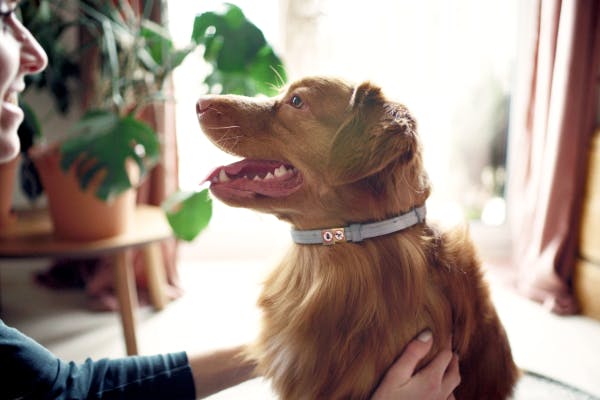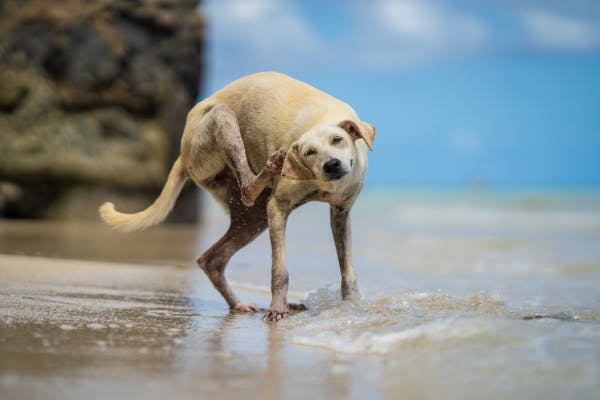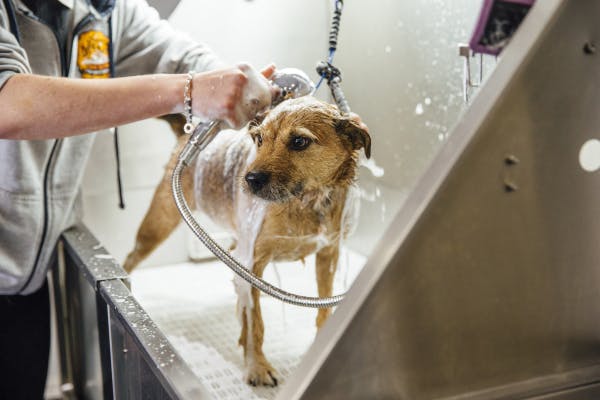Collars in U.S.A
Best Dog Collars
Choosing the best dog collar involves considering factors like size, material, safety concerns, and specific needs. Popular materials include nylon, leather, biothane, cotton fabric, hemp, neoprene, and rope.
Why You Should Trust Us
Handpicked collars. Our expert researchers, data analysts, and editors have put more than 45 hours of effort into researching the best available dog collars in the United States. We had researched 607 collars sold in 5 countries before handpicking the 24 best dog collars.
- Hours Researched
- 45+
- Products Researched
- 607
- Products Handpicked
- 24
- Acceptance Rate
- 4%
How to choose The Best collar:
When choosing the perfect collar for your dog, it is essential to focus on a few key features to ensure comfort, safety, and durability. One of the most important aspects to consider is the adjustability and fit of the collar. Look for collars with multiple sizing options or a sliding buckle that allows for easy adjustments. This will help you find the perfect fit for your dog's neck without being too tight or too loose. A well-fitted collar ensures that your dog is comfortable and reduces the risk of injury or escape.
In addition to finding a collar with the right fit, it is crucial to pay attention to the durability and quality of materials used in its construction. High-quality materials such as nylon, leather, or polyester ensure that the collar can withstand wear and tear, lasting for a long time. Also, make sure to examine the hardware components like buckles, D-rings, and clasps. These should be sturdy and strong enough to handle your dog's strength and activity level.
Consider visibility and safety features when selecting a dog collar. Many top-quality collars incorporate reflective materials or bright colors to increase visibility during nighttime walks or in low-light conditions. This added safety measure can help protect both you and your dog from potential accidents or mishaps while out and about. By prioritizing these key factors, you can feel confident that you're making a wise investment in your dog's comfort and safety while also adding a stylish accessory to their wardrobe.
3 types of dog collars:
common questions about collars:
Shock Collars
- our rating90 out of 100
- our rating89 out of 100
- our rating87 out of 100
Shock collars offer various benefits for dog training when used correctly and responsibly, such as:
Correcting behavior from a distance: Shock collars are useful for off-leash training and ensuring your dog obeys commands even when you're not close by.
Effective when voice commands aren't an option: For dogs that don't respond well to verbal commands or have difficulty hearing, shock collars can be a helpful communication tool to discourage unwanted behavior.
Useful when you're not present: Shock collars can maintain consistent training and ensure your dog's safety in situations like invisible fencing or controlling aggressive behaviors, even when you're not around.
Reducing aggression: Shock collars can help prevent aggressive behaviors in dogs, potentially saving them from severe consequences or legal requirements to euthanize the dog.
Providing instant feedback: Shock collars give immediate feedback to your dog, helping them understand the connection between their behavior and the corrective stimulus, making training more effective.
Cost-effective: Compared to other training tools and professional services, shock collars can be more affordable while still achieving desired results.
Punishment doesn't come from you: With shock collars, negative feedback comes from the collar rather than the owner, preventing any negative association between the owner and punishment while maintaining a strong bond with your dog.
Remember that shock collars should be used responsibly and only as a last resort after trying other positive reinforcement training methods. Ensure the shock collar is of high quality and follow the manufacturer's instructions for optimal results and minimal risk to your dog.
Martingale Collars
- our rating98 out of 100
- our rating98 out of 100
- our rating93 out of 100
Martingale collars, also known as limited-slip or Greyhound collars, are designed to offer better control and safety during walks, particularly for dogs with narrow heads and larger necks like Greyhounds, Whippets, Salukis, Dachshunds, and Collies. The collar has a two-loop design, where one loop fits around the dog's neck and the smaller loop is for leash attachment. When the dog pulls or tries to escape, the smaller loop tightens the larger one without choking the dog.
These collars are popular for their safety features and training benefits. They provide better control by gently tightening around the dog's neck when they pull without causing discomfort. This helps discourage pulling behavior and maintain control over skittish or nervous dogs. Martingale collars are recommended by trainers and rescue professionals because they prevent escape while being gentler than traditional choke or prong collars.
Learn About Martingale Collars
No Pull Harnesses
- our rating93 out of 100
- our rating93 out of 100
- our rating92 out of 100
A no-pull dog harness offers several advantages:
Improved control: It helps owners manage strong or large dogs that pull during walks by redirecting their force towards the owner.
Reduced neck strain: Unlike collars, no-pull harnesses distribute pressure across the dog's chest and torso, preventing injuries to the trachea and neck muscles.
Enhanced communication: The harness serves as a communication tool, teaching dogs appropriate leash manners and discouraging pulling behavior.
Better safety: No-pull harnesses reduce the risk of dogs escaping their leash or slipping out of their collar due to a more secure fit.
Suitable for sensitive dogs: Some dogs may respond better to a no-pull harness than traditional collars because it distributes pressure across their chest instead of their neck.
Proper training techniques should be used alongside no-pull harnesses for long-lasting results and to prevent potential injuries from prolonged use.
Learn About No Pull Harnesses
Questions About Collars
How do I choose the right size collar for my dog?
To select the appropriate collar size for your dog, consider their breed, measure their neck, factor in fur length, think about collar width, account for growth in puppies, and check the collar regularly. Consult your veterinarian if you need further guidance.
What are common dog collar materials and how do they compare in durability and comfort?
Nylon collars are popular, versatile, durable, and affordable, but may not last as long as other materials. Leather collars are durable, classic-looking, and suitable for dogs with allergies or sensitive skin, but may not be ideal for dogs who frequently get wet or chew on their collars. Biothane collars are waterproof, non-toxic, easy to clean, and durable, but may lack style. Cotton fabric collars come in various patterns and colors and can be washable but may not be as strong or long-lasting. Hemp collars are gentle for dogs with allergies or sensitive skin, durable, biodegradable, and resistant to odors and mildew, but may be less available. Neoprene collars are comfortable for dogs with skin allergies, water-resistant, and often combined with nylon or polyester for added strength. Rope dog collars are comfortable, durable, smooth-textured, and unlikely to unravel or wear down quickly.
Are there any safety concerns with certain types of collars?
Yes, some dog collars pose safety risks, including:
Choke chains: These collars can cause physical harm and behavioral problems like fear and aggression.
Prong or pinch collars: They can cause pain, discomfort, and fear in dogs.
Shock collars (e-collars): They may cause physical and emotional harm, leading to fear, anxiety, and aggression.
Head collars: Improper use can lead to neck injury or paralysis.
Slip leads / show leads / loop leads: These collars can choke and cause trachea damage if used incorrectly.
To ensure your dog's safety, choose an appropriate collar based on size, breed, temperament, and training needs. Flat collars or harnesses are generally safer options. Make sure the collar fits properly and use positive reinforcement training methods.
How easy is it to clean and maintain dog collars?
Cleaning and maintaining dog collars is relatively simple. The method depends on the collar material, but typically involves soap, cleaning solution, or appropriate leather cleaner. Here are guidelines for cleaning various types of dog collars:
Synthetic Dog Collars (Nylon, Polyester):
Soak the collar in hot water with dog shampoo or mild detergent for 10-20 minutes.
Scrub with a soft-bristled brush (e.g., an old toothbrush) to remove dirt.
Rinse under hot water and air dry on a flat surface or hang by the buckle.
Leather Dog Collars:
Don't soak leather collars in water.
Wipe away dirt with a damp cloth for general cleaning.
Clean stubborn stains with white vinegar and water or saddle soap.
Air dry away from direct sunlight or heat sources after cleaning.
Apply leather conditioner to maintain suppleness and durability.
Metal Parts of Dog Collars:
Clean lightly soiled metal with mild dog shampoo or dish soap.
Remove rust or discoloration with a water and baking soda paste, scrub with a toothbrush, rinse, and let dry.
E-Collars (Elizabethan Collars):
Clean hard plastic cones with a damp cloth or mild soap and water for heavy soiling; let dry before putting back on your dog.
Spot clean soft E-collars with a damp cloth and mild unscented soap; ensure it's fully rinsed and dry before putting back on your dog.
Regular cleaning helps keep your dog's collar in good condition, free from dirt, grime, and odors.
Should I prioritize a collar with a warranty?
Yes, choosing a collar with a warranty is smart. A warranty usually shows that the manufacturer is confident in their product's quality and durability. If there are any defects in materials or workmanship, a warranty guarantees that the manufacturer will repair or replace the product at no extra cost to you during the warranty period. This can save you money and give you peace of mind, knowing that you have protection against possible problems with your pet's collar.




















